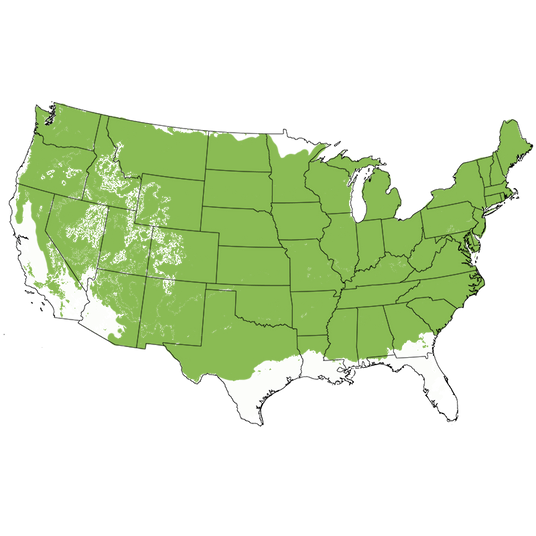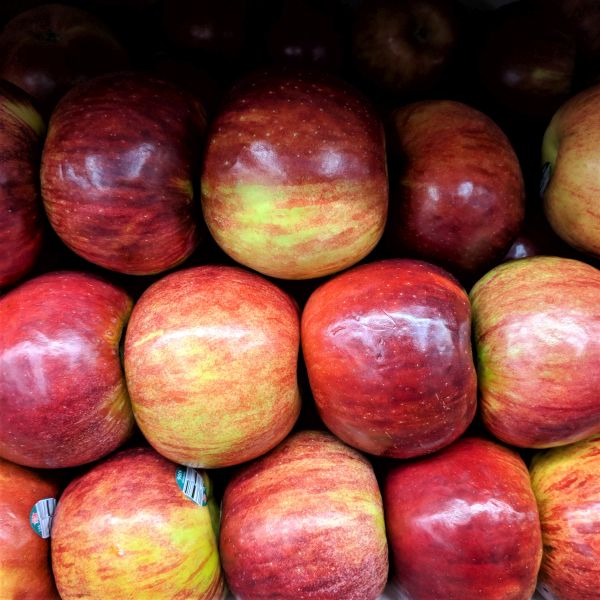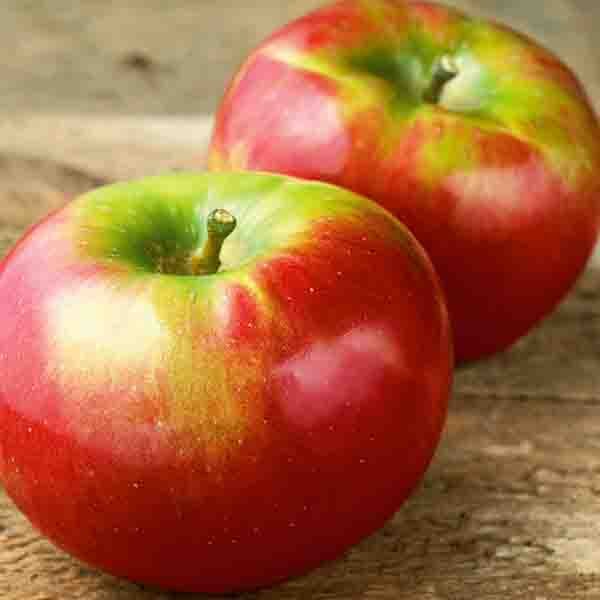Cortland Apple Tree
Malus 'Cortland'
Plant Sentry™
Plant Sentry™

Plant Sentry™ Protected
Your order is protected by our compliance system that:
- Prevents restricted plants from shipping to your state
- Ensures plants meet your state's agricultural requirements
- Protects gardens from invasive pests and diseases
Delivery and Shipping
Delivery and Shipping
Delivery and Shipping
Fast, Safe Plant Delivery
Ships in 3-4 business days • Tracking provided • Weather protected
| Under $50 | $9.99 |
| $50 - $99.99 | $14.99 |
| $100 - $149.99 | $16.99 |
| $150 - $198.99 | $24.99 |
| $199+ | FREE |
✓ Zone-specific timing • ✓ Professional packaging • ✓ Health guarantee
Understanding Plant Options
Nature Hills offers plants in two main formats:
- Container Plants: Grown in pots with soil, sized by container volume and plant age
- Bare Root Plants: Dormant plants without soil, sized by height measurements
Container Plant Sizes
Container sizes indicate plant age and growing capacity rather than liquid volume equivalents. Our containers follow industry-standard nursery "trade gallon" specifications, which differ from standard liquid gallon measurements.
Young Plants (6 months to 18 months old)
| Container Size | Actual Volume | Metric Equivalent |
|---|---|---|
| 2" x 2" x 3" | 0.18 - 0.21 dry quarts | 0.20 - 0.23 dry liters |
| 4" Container | 0.31 - 0.87 dry quarts | 0.35 - 0.96 dry liters |
| 4.5" Container | 0.65 dry quarts | 0.72 dry liters |
| 6" Container | 1.4 dry quarts | 1.59 dry liters |
| 1 Quart | 1 dry quart | 1.1 dry liters |
| 5.5" Container | 1.89 dry quarts | 2.08 dry liters |
Established Plants (18 months to 2.5 years old)
| Container Size | Actual Volume | Metric Equivalent |
|---|---|---|
| 2 Quart | 2 dry quarts | 2.2 dry liters |
| #1 Container | 2.26 - 3.73 dry quarts | 2.49 - 4.11 dry liters |
| 5" x 5" x 12" | 3.5 - 4.3 dry quarts | 3.85 - 4.74 dry liters |
Mature Plants (2-4 years old)
| Container Size | Actual Volume | Metric Equivalent |
|---|---|---|
| #2 Container | 1.19 - 1.76 dry gallons | 5.24 - 7.75 dry liters |
| #3 Container | 2.15 - 2.76 dry gallons | 8.14 - 12.16 dry liters |
Large Plants (3-5 years old)
| Container Size | Actual Volume | Metric Equivalent |
|---|---|---|
| #5 Container | 2.92 - 4.62 dry gallons | 12.86 - 20.35 dry liters |
| #6 Container | 5.25 - 6.01 dry gallons | 23.12 - 26.42 dry liters |
| #7 Container | 5.98 - 6.53 dry gallons | 26.34 - 28.76 dry liters |
Bare Root Plants
Bare root plants are sold by height from the root system to the top of the plant. Plants may exceed minimum height requirements.
Common Sizes:
- Trees: 1 foot, 2 feet, 3 feet, 4 feet, 5 feet, 6 feet
- Shrubs & Perennials: 1 foot, 18 inches, 2 feet
Important Notes
Container Volume Specifications
- Trade Gallon Standard: Our containers follow industry-standard "trade gallon" specifications established by the American National Standards Institute (ANSI Z60.1) for nursery stock
- Volume Variations: Actual soil volume may vary due to plant root systems and growing medium settlement
- Age Indicators: Container size primarily indicates plant age and maturity rather than liquid volume equivalents
Growing Conditions
- Plant size can vary based on variety and growing conditions
- Container size helps indicate plant maturity and establishment level
- Larger containers generally mean more established root systems and faster landscape establishment
Seasonal Availability
- Bare root plants are available seasonally when dormant
- Container plants are available throughout the growing season
- Specific varieties may have limited availability in certain sizes
Questions?
For questions about specific plant sizes or availability, please contact our plant experts who can help you choose the right size for your landscape needs.

Plant Sentry™ Protected
Your order is protected by our compliance system that:
- Prevents restricted plants from shipping to your state
- Ensures plants meet your state's agricultural requirements
- Protects gardens from invasive pests and diseases
Plant Profile & Growing Essentials
Cold hardy, Flowering, Edible, Ornamental Berries/Fruit, Attracts pollinators, and Thornless
Specifications
Specifications
-
Botanical Name
-
Height
-
Width
-
Growing Zones
-
Sunlight
-
Growth RateModerate
-
Flower Color
-
Leaf Color
-
Fall Color
-
NativeYes
-
Pollinator FriendlyYes
-
Pollinator Required
-
FragrantYes
-
Bloom PeriodLate Spring
-
Does Not Ship ToAK, CA, HI, ID, MT, OR
Planting & Care
Planting & Care
How many ways would you like to use your Apples? The Cortland Apple (Malus 'Cortland') gives you a multitude of choices! It is a cross between a Ben Davis and a McIntosh, and the variety has been cultivated for the past 100 years making it a fantastic Heriloom variety for your home orchard! Originating in the state agricultural experiment station in Geneva, New York for an agricultural breeding program in 1898.
It is a mid-season variety that when mature, your Cortland Apple tree will be covered with medium to large, bright red fruit with highlights of yellow and red striped. The white flesh of this variety does not turn brown after peeling as rapidly as most Apple varieties, so it is a great Apple to use in salads! In addition to salads, the sweet and slightly tart flesh is great for cider, pies, and freezing, so you can enjoy your Apples all year long.
In April, you can expect your Cortland Apple tree to be surrounded by bees, pollinating the pink and white blooms. While partially self-fertile, you will probably want to add another variety to improve pollination and yield. They are reliable bearers and will produce a full crop in 4 to 6 years. You can pair this variety with others that bloom about the same time, such as Granny Smith, Golden Delicious, and Cripp's Pink.
How to Use Cortland Apple Tree In The Landscape
The Cortland Apple is a vigorous variety with a lovely form. Spring blossoms, lush foliage and tasty gems, plus fantastic branching form for 4 season-interest. These are beautiful specimen trees as well as accents around the garden for low privacy and shade, in addition to a fantastic orchard tree and healthy Apples.
Charming cottage garden accents, these shade your vegetable gardens and adorn your garden beds in floral beauty! Tidy sized for small yards and small orchards as well as it is for tucking into large orchards to extend the harvest. The spring flowers bring loads of pollinators to your garden and all the attention with their fragrance each year!
Because the flesh of this Apple doesn’t brown fast, use these in fresh fruit salads, slaw, Woldorf salads, and on a charcuterie board for a crisp crunchy element. Pies, cakes, cider, and Apple butter, in addition to canned apples and apples fresh from the tree, will be yours to enjoy in a few short years. Good for baking and desserts as well as sauces and preserves, Cortland is ready to harvest just in time for late summer barbecues and get-togethers and back-to-school lunch boxes!
- Stunning Red Fruit with Yellow Highlights - Flavorful White Flesh
- Great Fresh Eating Apple - Doesn't Brown Fast
- Partly Self-Fertile But Higher Yields With a Pollinator
- Pollinators Adore the Fragrant White Blooms
- Mid-Season Producer - August
- Vigorous & Long-Lived Heirloom - 100 Years in Cultivation
- A Cross of Ben Davis and McIntosh
#ProPlantTips For Care
Fruit trees like Cortland need full sun for the most blooms and therefore the most fruit. Requiring 8 hours of sunlight for the best crops. Do you live in the northern part of the country? The Cortland Apple does well in cold climates and grows well in zones 4-8. Able to survive cold winters.
Plant your Apple in rich, well-drained soil. If your soil lacks nutrients, add organic matter like leaves, compost and manure to enrich the soil. While the tree is young, you will need to water weekly as the sapling sinks its roots deep into the aquifer. Provide a 3-4 inch layer of mulch to hold in moisture and insulate the roots.
Cortland is moderately resistant to fire blight and apple scab, so you will have to worry less about pests and diseases. Prune to keep an open canopy for sunlight and air circulation, remove crossing branches, and maintain size and vigor.
- Full Sun!
- Regular Water & Fertility
- Enriched Soil
- Very Cold Hardy & Easy to Care For
- 800-1000 Chill Hours
- Prune When Dormant
The longer you wait to put your Cortland Apple tree in the ground, the longer you will have to wait to enhance your life with the delicious Apples that it will produce. Nature Hills ships plants that are already 3-5 years old, so you won't be waiting long for your first harvest. Plant this lovely Cortland Apple Tree this spring by ordering from Nature Hills now!
Cortland Apple Tree Frequently Asked Questions
When to Plant Cortland Apple Trees
Planting Bareroot trees as soon as you can dig a hole in spring and until hot weather, the earlier the better. Plant container Apple trees throughout the growing season with complete success - that is the benefit of container plants - to extend the planting season. Your County Agricultural Extension Office is a great resource for first and last frost dates in your area.
How to Plant Cortland Apple Trees
Dig a large hole only as deep as needed to accommodate the bareroot or container root ball, and twice as wide. Add Nature Hills Root Booster to speed root establishment. Remove the pot or bag and situate it into the hole so the top of the soil (soil line if bareroot), is level with the new location's soil being careful not to plant too deep. Water in again very well and backfill with the same soil you dug up, tamping down gently to ensure there are no air pockets.
Top off with a 3-4 inch thick layer of Arborist mulch. Consider staking your tree to keep its trunk growing straight for the first year to ensure it stands tall against strong winds and drifting snow.
When to Prune Cortland Apple Trees
Trim off any broken branches from delivery as soon as you take them out of the box. Prune and trim apple trees while dormant, in late winter or early spring, before you see new growth.
How to Prune Cortland Apple Trees
Dormant prune to:
- Remove any double leaders or narrow crotch angles
- Eliminate any crossing branches
- Thin interior branching and leave the fruiting spurs and strong branches in place opening up the canopy
- Branching at least 24-36 inches above the ground
Prune Apple trees in the summer to:
- Control size and shape by reducing the length of longer new growth on vigorous trees
- Remove water sprouts on the main trunk or older branches in the crown
- Remove suckers at the base of the trunk
- Thin fruit during heavy years on established trees
How to Care for Cortland Apple Trees
Growing an Apple tree is easy when proper soil, good drainage, attention to moisture, and regular fertility are maintained. Once you've chosen an apple tree that works for your climate, in the size you need for your landscape, and its pollinator (if needed), then you've accomplished half the battle!
- Apple trees do best in full sun and well-drained soil
- Water your apple trees when they gets dry - especially during the fruit production stage, and drought periods to keep it stress-free
- Use arborists' wood chips to mulch over the roots of your apples and have your soil tested to see what your soil may be lacking before adding fertilizers
- Maintenance pruning and shaping
Apple trees will tolerate a wide range of soils, so long as water and nutrients are not limited and the pH level is adequate.
How to Fertilize Cortland Apple Trees
For the first year, water alone is most important. It is always best to get a soil test to see what your soil is lacking before adding more fertilizers. Once established, a fertilizer routine may be beneficial. We do offer some excellent slow-release organic options, applied according to the package directions.
Fruit trees need more phosphate and it's possible to apply too much nitrogen which affects the soil's pH. Test soil acidity or alkalinity using a pH Tester.
Fertilize in spring when you first see new growth emerging.
- Don't overdo it
- Phosphates are your friends
- Pay attention to pH in areas with extremely high or low soil pH
- Follow the directions
Cortland Apple Tree Pollinating Info
Cortland is self-fruiting and doesn't need a pollinating partner, but will bear more fruit when paired with these varieties:
Harvest Times for Cortland Apple Trees
Cortland's are typically ready to harvest in August.
Early-Season? Mid-Season? Late-Season? The terminology can be confusing for new apple tree growers. Weather, climate and your tree determine when it's ripe.
For Apples:
- Early-season is usually June-July
- Mid-season can be August-September
- Late-season can be from late September-November
The growing season consists of spring, summer, and fall, and varies with climate and weather. Areas with longer growing seasons in the warmer hardiness zones can greatly affect the harvest times for each particular apple variety grown in your area. Learn which growing zone you are in.
What Shipping Options Do You Offer?
NatureHills.com works closely with our growers and nursery professionals to ensure we ship when it is most appropriate for your area. Our goal is to deliver the hardiest plants by avoiding extreme high and low temperatures. Check out our shipping schedule for more information and to learn our wills and won'ts when it comes to shipping plants. Find your Cortland Apple Tree for sale here at NatureHills.com!











